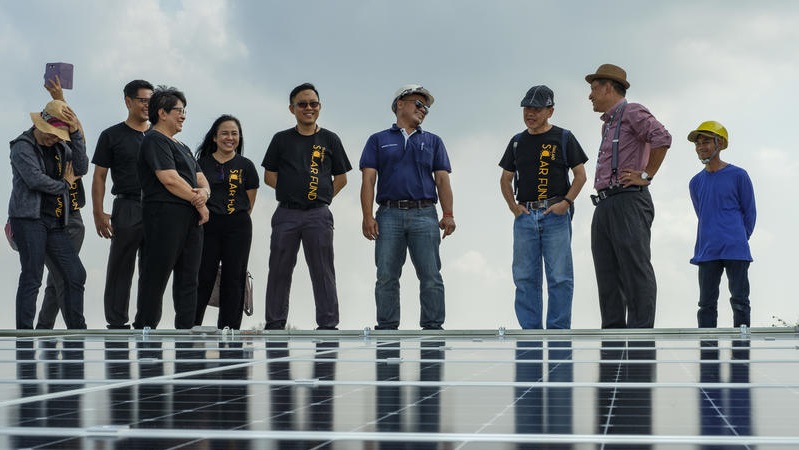The World Bank’s plan to loosen its spending rules and lend more money to climate projects in developing countries does not go far enough, according to officials and campaigners.
The bank’s president David Malpass said last week that the International Bank for Reconstruction and Development (IBRD), the biggest part of the World Bank, may lower its equity-to-lending ratio by one percentage point to 19%.
That would free up around $4 billion a year for emission-cutting and climate adaptation projects. The World Bank claims it spends about a third of its money on climate programmes and is making climate more central to its mission.
Avinash Persaud is an adviser to Barbados’s prime minister Mia Mottley and one of the key brains behind the push for the World Bank’s green reform. He told Climate Home that 19% was “not low enough but a start”.
A spokesperson for Germany’s economic cooperation and development (BMZ) told Climate Home the proposed change “is a first step” but “having in mind the dimension of the challenges ahead, more reforms are needed”.
The push to reform the bank began in the Caribbean island of Barbados but has been picked up by the US and Germany, two major shareholders in the bank. The US will pick the bank’s next president when Malpass retires in June.
Neither Persaud nor the BMZ put forward a precise equity-to-loan ratio. But E3G campaigner Franklin Steves said the bank should target a range of 15-18%, adding that should be a ceiling rather than the existing floor.
He said that 19% “fails to meet the level of ambition” that the bank’s government shareholders called for at its annual meeting last year or the recommendations of the G20 group of major economies.
Corporations push “insetting” as new offsetting but report claims it is even worse
But many big developing nations fear that reforms could undermine the bank’s credit rating, making it more expensive for the bank to borrow money and eventually pushing up interest rates for the countries it lends to.
China, India and Brazil were among the countries to sign a note recently warning the bank to “avoid measures . . . that might not be understood by rating agencies in positive light”.
The bank’s triple-A rating was “necessary to be able to raise funds at a cost that would enable lending at below-market rates”, it said. “This is the very rationale underlying the [multilateral development bank] concept.”
But the reformers are trying to quell these fears. Persaud said he does not “believe in the Bank losing its AAA rating”. The BMZ spokesperson said the rating “is crucial to the World Bank’s business model” and “there is a need to balance risk-appetite and prudence”.
E3G’s Franklin Steves said a 15-18% ceiling “would not pose a threat to the Bank’s credit ratings, and would unlock tens of billions dollars more in climate and development finance”.
